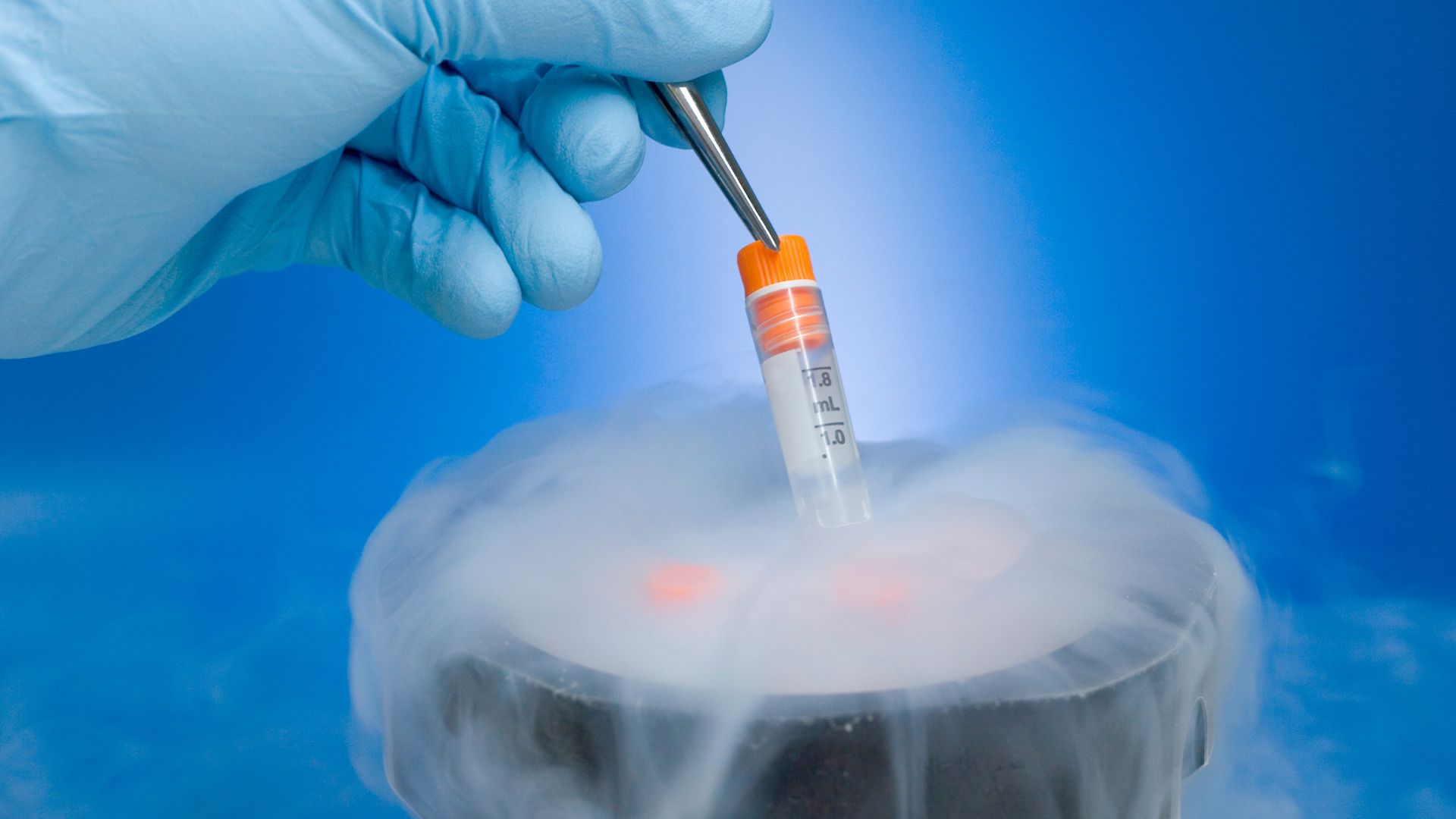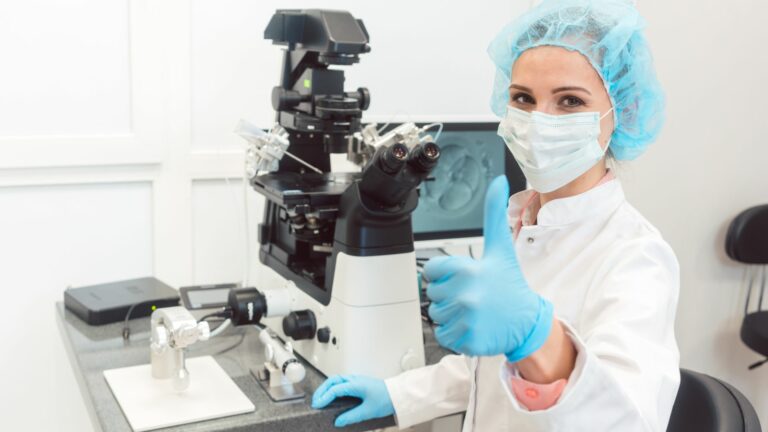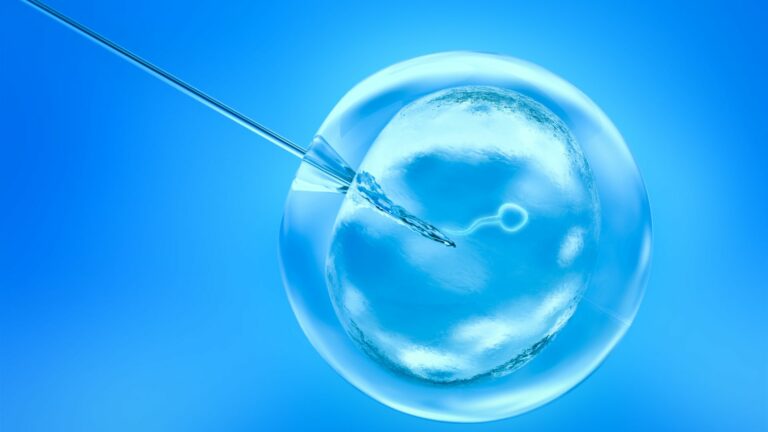
Are you considering in vitro fertilization (IVF) and wondering what to do with unused embryos? The decision to freeze or not to freeze embryos is a significant one that many individuals and couples face during their fertility journey.
In this article, we’ll explore the key factors to consider, break down the potential benefits and challenges, and provide a step-by-step guide for navigating this complex choice.
Key Takeaways
| Insight | Importance | Implications |
|---|---|---|
| Embryo cryopreservation offers increased chances of future pregnancies by preserving fertility potential at a specific point in time. | High | Provides flexibility for family planning and safeguards against age-related fertility decline. |
| Freezing embryos involves financial costs for the initial procedure, ongoing storage, and potential future use. | High | Requires careful budgeting and consideration of long-term financial commitments. |
| Ethical and moral considerations surrounding the status of embryos can impact the decision-making process. | Medium | Necessitates open communication and alignment of personal values within couples. |
| Open communication within couples and seeking professional guidance are crucial for making an informed choice. | High | Ensures a well-informed decision that aligns with individual goals and circumstances. |
Understanding the Basics of Embryo Cryopreservation
What is Embryo Cryopreservation?
Embryo cryopreservation is the process of freezing and carefully storing embryos (fertilized eggs) for potential future use.
It involves the use of specialized freezing solutions (cryoprotectants) to protect the embryos during the freezing and thawing processes.
Embryos are typically frozen at the blastocyst stage (5-6 days after fertilization) and stored in liquid nitrogen tanks at extremely low temperatures (-196°C/-320°F) to halt biological activity.
The Cryopreservation Process: A Step-by-Step Overview
- Embryo Creation: Embryos are created through the process of in vitro fertilization (IVF). Eggs are retrieved from the ovaries and fertilized with sperm in a laboratory setting.
- Embryo Development: The fertilized eggs are monitored and allowed to develop into embryos over the course of several days. Embryos that reach the blastocyst stage (typically day 5 or 6) are considered optimal for cryopreservation.
- Cryoprotectant Treatment: Prior to freezing, the embryos are treated with specialized cryoprotectant solutions. These solutions help protect the embryos from damage during the freezing process by replacing the water in the cells with a protective fluid.
- Freezing: The treated embryos are then carefully frozen using either a slow-freeze method or a newer technique called vitrification. Vitrification involves rapidly cooling the embryos to a glass-like state, minimizing the formation of ice crystals that can damage the embryos.
- Storage: Once frozen, the embryos are stored in labeled cryopreservation straws or vials and placed in liquid nitrogen tanks. The ultra-low temperature of the liquid nitrogen (-196°C/-320°F) effectively halts biological activity, allowing the embryos to be stored for extended periods.
- Thawing: When the individual or couple is ready to use the frozen embryos, the straws or vials are removed from storage and carefully thawed. The cryoprotectant solutions are removed, and the embryos are assessed for survival and viability.
- Embryo Transfer: Viable thawed embryos can then be transferred into the uterus, with the goal of achieving pregnancy. Learn more about the IVF process and what to expect from IVF.
How Does Embryo Cryopreservation Fit into IVF?
Embryo cryopreservation is most often used in conjunction with IVF. During an IVF cycle:
- Multiple eggs are retrieved.
- Several eggs may be fertilized.
- Usually, one or two fresh embryos are transferred to the uterus.
- Any remaining viable embryos may be cryopreserved for future use.
The Central Dilemma: To Freeze or Not to Freeze
Individuals or couples undergoing IVF with multiple viable embryos face a key decision:
- To freeze the unused embryos for potential future use, or
- Not to freeze them.
This complex and personal choice has medical, financial, ethical, and emotional implications. Let’s explore the reasons for and against freezing embryos.
Reasons to Consider Freezing Embryos
Increased Chances of Future Pregnancies
Cryopreservation allows you to preserve your fertility potential at a specific point in time.
Following a successful IVF cycle, frozen embryos offer the chance for future pregnancy attempts without needing to repeat the entire IVF process (hormone stimulation, egg retrieval, etc.).
According to the American Society for Reproductive Medicine (ASRM), national average survival rates for frozen-thawed blastocyst transfers range from 46.6% to 53.6% per transfer cycle (source).
| Benefit | Details |
|---|---|
| Increased chances of future pregnancies | Freezing embryos allows for future pregnancy attempts without repeating the entire IVF process. |
| Fertility preservation | Cryopreservation safeguards against age-related fertility decline and allows for fertility preservation before medical treatments that may impact fertility. |
| Flexibility for family planning | Embryo freezing enables individuals or couples to delay childbearing for personal or professional reasons. |
| Potential for embryo donation | Unused frozen embryos can be donated to help others build their families. |
Tip: Discuss your individual success rate expectations with your fertility specialist, considering factors like age and embryo quality.
Fertility Preservation
Cryopreservation safeguards against potential future declines in fertility. Age is a significant factor in fertility, so freezing embryos at a younger age can offer a better chance of successful pregnancy later.
Additionally, medical treatments (e.g., chemotherapy, radiation therapy) can impact fertility. Cryopreservation allows you to preserve your embryos before undergoing such treatments.
For example, a woman diagnosed with cancer may choose to freeze her embryos before starting treatment to preserve her future childbearing options (source).
Learn more about fertility preservation for cancer patients in India.
Flexibility for Delayed Family Planning
Cryopreservation allows you to delay childbearing for personal or professional reasons. A couple might choose to freeze embryos to focus on establishing careers before starting a family.
Potential for Embryo Donation
You can choose to donate your frozen embryos to another couple struggling with infertility. This selfless option allows others to build their families.
Consult your fertility clinic about embryo donation programs and legalities. The ASRM provides a guide to embryo donation (source).
Reasons to Hesitate About Freezing Embryos
Concerns About Embryo Viability
The freezing and thawing processes can carry some risk of damage to embryos. Not all embryos survive cryopreservation.
Survival rates depend on various factors, including embryo quality and the specific freezing technique used.
Action Step: Discuss success rates and potential risks with your fertility specialist. Inquire about your clinic’s specific cryopreservation techniques and their impact on embryo survival.
| Challenge | Details |
|---|---|
| Embryo viability concerns | The freezing and thawing processes can pose risks to embryos, and not all embryos survive cryopreservation. |
| Financial burden | Embryo cryopreservation involves costs for the initial procedure, ongoing storage, and potential future use. |
| Ethical and moral considerations | Diverse viewpoints on the status of embryos can impact the decision-making process. |
| Long-term storage decisions | Cryopreservation involves a long-term commitment and requires decisions about future embryo use or disposal. |
Financial Burden
Embryo cryopreservation involves additional costs, including:
- The initial freezing procedure
- Ongoing storage fees (typically annual)
- Potential future costs associated with using the frozen embryos (thawing, transfer procedures)
Learn more about IVF costs in India and strategies for IVF on a budget.
Action Step: Request a detailed breakdown of all associated costs from your fertility clinic before making a decision. Explore financing options if needed.
Ethical and Moral Considerations
There are diverse viewpoints on the status of frozen embryos. Some individuals may have religious or ethical objections to cryopreservation due to their beliefs about the beginning of life.
Explore IVF and religious considerations in India.
Open communication within couples is crucial. Discuss your individual values and beliefs surrounding embryo cryopreservation. Consider seeking guidance from a counselor or religious leader if needed.
Decision-Making About Long-Term Storage
Cryopreservation involves a long-term commitment. What happens if you decide you don’t want to use the embryos in the future? Options include:
- Embryo donation: Helping another couple build their family
- Embryo thaw and discard: Ending the storage and destroying the embryos (may have legal or ethical implications based on location)
Action Step: Research your local laws and regulations regarding embryo storage and disposal options. Discuss your long-term plans with your fertility specialist.
Step-by-Step Guide to Navigating the Decision-Making Process
Choosing whether or not to freeze embryos is a highly personal decision. Here’s a step-by-step roadmap to guide you through the process:
- Gather Information:
- Consult with your fertility specialist about success rates, risks, costs, and legal/ethical considerations.
- Research credible sources like the ASRM and the National Institutes of Health.
- Assess Your Personal Situation:
- Consider your current age, fertility status, and future family planning goals.
- Evaluate your financial resources and long-term budgeting for cryopreservation costs.
- Reflect on your religious, ethical, or moral viewpoints regarding embryo freezing.
- Discuss as a Couple (if applicable):
- Openly communicate your individual perspectives, values, and concerns.
- Explore your shared goals for family building and future fertility options.
- Consider seeking counseling or support to navigate any differences or emotional challenges.
- Weigh the Benefits and Challenges:
- Assess the potential benefits of cryopreservation, such as increased chances of future pregnancy and fertility preservation.
- Consider the challenges, including embryo viability risks, financial costs, and long-term storage decisions.
- Determine which factors hold the most significance for your unique situation.
- Create a Plan:
- Based on your discussions and reflections, outline your preferences for embryo freezing, storage duration, and future use or disposal.
- Develop a financial plan to manage the costs associated with cryopreservation.
- Establish a timeline for revisiting and reassessing your plan as needed.
- Seek Support:
- Recognize the emotional complexities of the decision-making process.
- Reach out to a therapist, counselor, or support group specializing in fertility issues.
- Connect with others who have navigated similar decisions for guidance and shared experiences.
- Make an Informed Decision:
- Synthesize the information gathered, personal reflections, and discussions with your partner and healthcare team.
- Make a decision that aligns with your values, goals, and circumstances.
- Remember that your decision is not final and can be revisited as your situation evolves.
By following this step-by-step guide, you can approach the decision-making process with clarity, intentionality, and support. Remember, there is no one-size-fits-all answer, and your unique path is valid.
Location Links
Here are some additional location-specific resources for IVF and embryo cryopreservation in India:
- IVF Centers in Kanpur
- IVF Centers in Indore
- IVF Centers in Bhopal
- IVF Centers in Agra
- IVF Centers in Amritsar
- IVF Centers in Mysore
- IVF Centers in Aligarh
- IVF Centers in Guntur
- IVF Centers in Ajmer
- IVF Centers in Ujjain
Conclusion
The decision to freeze or not to freeze embryos is a significant one for individuals and couples undergoing IVF.
We’ve explored the potential benefits, considerations, and the importance of informed decision-making.
Key points to remember:
- Cryopreservation offers potential benefits like increased chances of future pregnancies and fertility preservation.
- There are considerations to address, including embryo viability, financial costs, and ethical viewpoints.
- Informed choice is key. Consult with your fertility specialist, research from credible sources, and prioritize open communication.
Moving forward, seek professional guidance from your fertility specialist and maintain open communication with your partner.
Remember, the decision can evolve as your circumstances and preferences change over time.
For additional support and resources, consider exploring:
- Resolve: The National Infertility Support Network
- The American College of Obstetricians and Gynecologists (ACOG)
By taking the time to gather information, explore your options, and communicate openly, you can make an informed decision about embryo cryopreservation that feels right for you.
What questions or concerns do you have about embryo cryopreservation? Share your thoughts in the comments below.
Remember, you’re not alone in navigating this complex decision. Reach out for support and guidance as needed.





